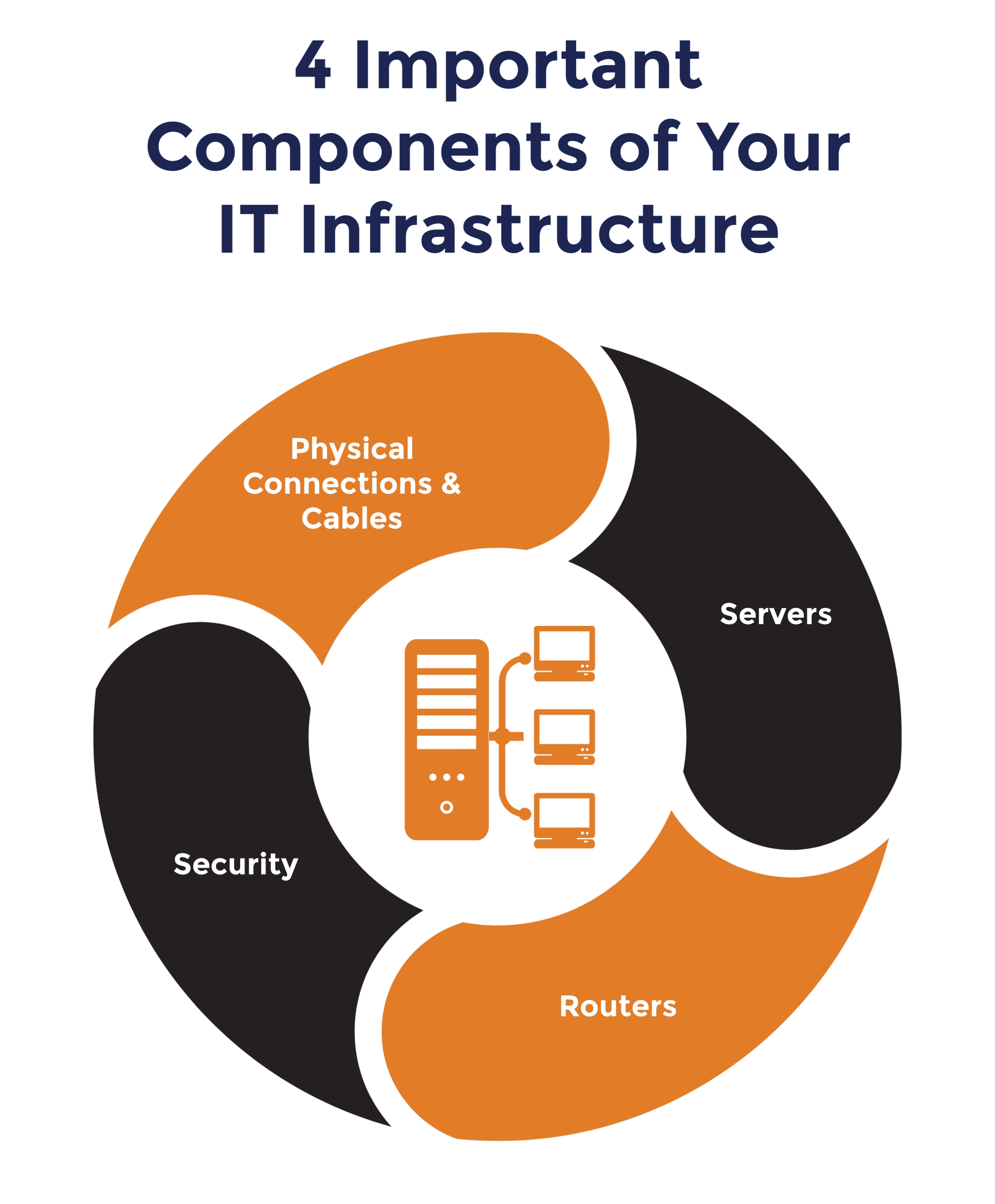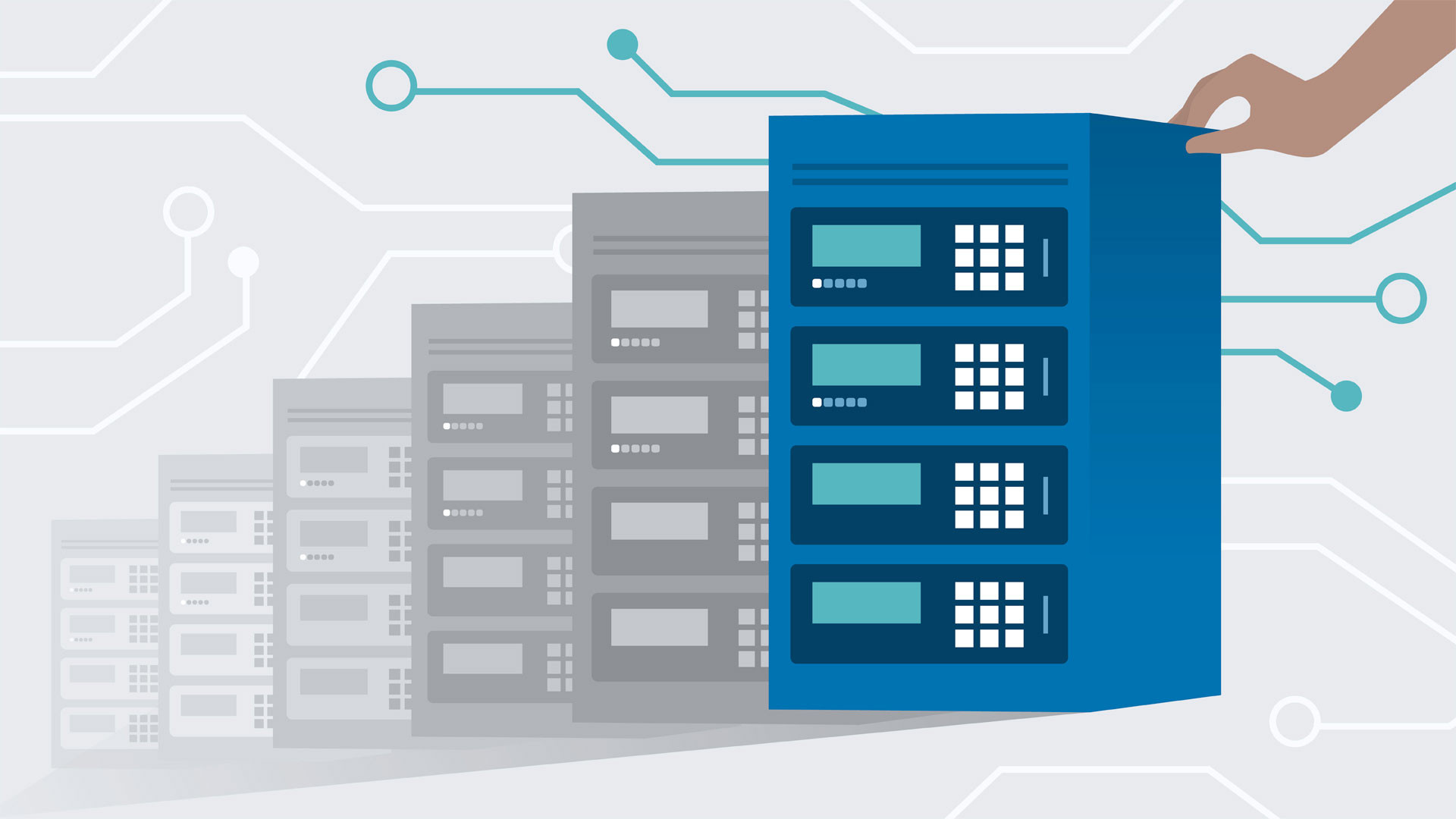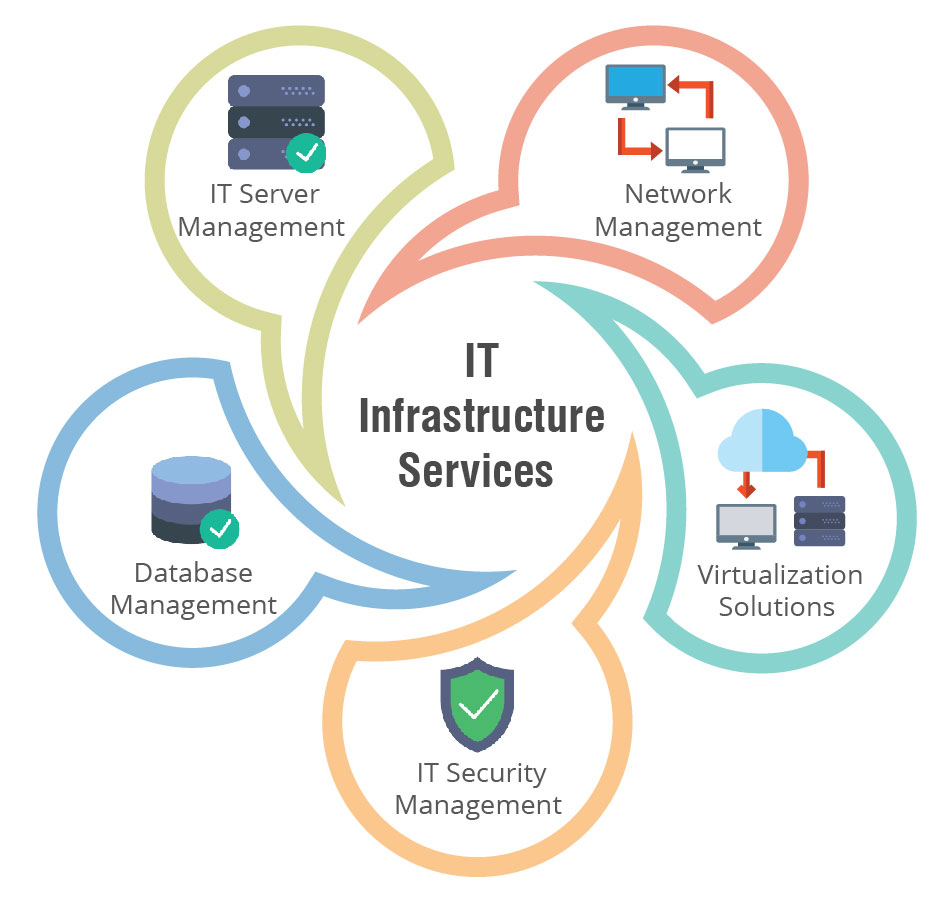Understanding Scalable IT Infrastructure for Enterprises
Scalable IT infrastructure solutions are vital for modern enterprises, enabling them to adapt to changing business needs and technological advancements. Seamless growth, cost efficiency, and enhanced performance are just a few benefits of implementing these solutions. Scalability refers to the capability of a system to expand or contract its resources in response to varying workloads, ensuring optimal performance and minimal resource wastage.
Scalable IT infrastructure solutions for enterprises involve a combination of hardware, software, and services designed to grow with the organization. As businesses expand, their IT requirements often evolve, necessitating the addition of new resources or the upgrading of existing ones. A scalable infrastructure allows for this expansion without requiring extensive overhauls or disrupting core operations.
Cost efficiency is another critical advantage of scalable IT infrastructure solutions. By enabling businesses to match their resources to their current needs, these solutions help minimize unnecessary expenditures on hardware, software, and maintenance. This, in turn, allows enterprises to allocate their budgets more effectively, focusing on core business functions and growth initiatives.
Lastly, scalable IT infrastructure solutions contribute to enhanced performance by ensuring that systems can handle increasing workloads without compromising speed, reliability, or security. By distributing resources intelligently and automating processes, these solutions help maintain optimal performance levels even as businesses grow and evolve.

Key Components of a Scalable IT Infrastructure
Scalable IT infrastructure solutions for enterprises rely on several essential components, including cloud computing, virtualization, automation, and AI-driven management tools. These elements work together to provide a flexible, reliable, and secure foundation for business operations.
Cloud Computing
Cloud computing is a central aspect of scalable IT infrastructure, enabling businesses to access and utilize computing resources on-demand over the internet. By leveraging cloud services, enterprises can scale their IT capabilities up or down as needed, without investing in expensive hardware or maintaining on-premises infrastructure.
Virtualization
Virtualization technology allows businesses to create multiple virtual instances of hardware, operating systems, and applications on a single physical server. This approach enhances resource utilization, reduces hardware costs, and simplifies management tasks. Virtualization also facilitates seamless migration, backup, and recovery processes, ensuring minimal disruption during system updates or failures.
Automation
Automation is another critical component of scalable IT infrastructure, streamlining processes and minimizing manual intervention. By automating routine tasks, such as system updates, patches, and backups, enterprises can reduce human error, improve efficiency, and allocate resources to more strategic initiatives. Additionally, automation enables real-time monitoring and response, ensuring that systems remain secure and perform optimally.
AI-Driven Management Tools
AI-driven management tools are increasingly being integrated into scalable IT infrastructure solutions, providing predictive analytics, intelligent resource allocation, and automated problem resolution. These tools leverage machine learning algorithms and big data analytics to optimize performance, enhance security, and reduce operational costs. By automating complex tasks and providing actionable insights, AI-driven management tools empower enterprises to make informed decisions and proactively address potential issues.
In summary, scalable IT infrastructure solutions for enterprises consist of cloud computing, virtualization, automation, and AI-driven management tools. By combining these components, businesses can create a flexible, reliable, and secure foundation for their operations, enabling seamless growth, cost efficiency, and enhanced performance.

Selecting the Right Scalable IT Infrastructure Provider
When choosing a scalable IT infrastructure provider, enterprises must consider several factors to ensure flexibility, reliability, and security. By carefully evaluating potential partners, businesses can select a solution that aligns with their unique needs and goals, ultimately driving growth and success.
Flexibility
A key factor in selecting a scalable IT infrastructure provider is flexibility. Enterprises should look for providers that offer a range of services, allowing them to customize their infrastructure according to their specific requirements. This may include various cloud deployment models (public, private, hybrid), virtualization options, and automation tools. Additionally, businesses should ensure that their chosen provider supports seamless integration with existing systems and applications, enabling a smooth transition and minimizing disruptions.
Reliability
Reliability is another crucial consideration when selecting a scalable IT infrastructure provider. Enterprises should seek out providers with a proven track record of delivering high availability, low latency, and consistent performance. This may involve evaluating the provider’s service level agreements (SLAs), data centers, and network infrastructure. Furthermore, businesses should consider the provider’s disaster recovery and business continuity capabilities, ensuring that their chosen solution can withstand potential disruptions and maintain critical operations.
Security
Security is paramount when selecting a scalable IT infrastructure provider. Enterprises should ensure that their chosen partner adheres to industry best practices and regulatory standards, implementing robust security measures to protect sensitive data and systems. This may include encryption, multi-factor authentication, access controls, and intrusion detection and prevention systems. Additionally, businesses should verify that their provider offers regular security updates, patches, and vulnerability assessments, ensuring that their infrastructure remains secure against emerging threats.
Support and Expertise
Lastly, enterprises should evaluate a provider’s support and expertise when selecting a scalable IT infrastructure solution. Businesses should look for providers with experienced teams, extensive documentation, and comprehensive training resources, ensuring that they can effectively manage and optimize their infrastructure. Furthermore, enterprises should consider the provider’s customer service and technical support offerings, ensuring that they can quickly and efficiently address any issues that may arise.
In conclusion, when selecting a scalable IT infrastructure provider, enterprises should prioritize flexibility, reliability, security, and support. By carefully evaluating potential partners based on these criteria, businesses can choose a solution that aligns with their unique needs and goals, ultimately driving growth and success.

How to Implement Scalable IT Infrastructure Solutions
Implementing scalable IT infrastructure solutions involves a series of stages, including assessment, planning, migration, and monitoring. By following a structured approach, enterprises can ensure a smooth transition to a flexible, cost-efficient, and high-performing infrastructure that supports their growth and operational needs.
Assessment
The first stage in implementing scalable IT infrastructure solutions is assessment. Enterprises should evaluate their existing IT infrastructure, applications, and workloads, identifying areas that require improvement and determining the necessary resources to support their growth and operational needs. This may involve analyzing performance metrics, capacity requirements, and security vulnerabilities, as well as considering any regulatory or industry-specific compliance requirements.
Planning
Once the assessment is complete, enterprises should develop a comprehensive plan for implementing their scalable IT infrastructure solutions. This plan should outline the specific components of the infrastructure, including cloud computing, virtualization, automation, and AI-driven management tools, as well as the migration strategy and timeline. Additionally, businesses should establish clear performance, security, and compliance objectives, ensuring that their chosen solution aligns with their goals and meets their unique needs.
Migration
The migration stage involves transitioning the existing IT infrastructure to the new scalable solution. Enterprises should follow a structured approach, minimizing disruptions and ensuring a smooth transition. This may involve implementing a phased migration strategy, gradually moving workloads and applications to the new infrastructure, and thoroughly testing each stage before proceeding to the next. Furthermore, businesses should establish clear communication channels, keeping all stakeholders informed throughout the migration process.
Monitoring
The final stage in implementing scalable IT infrastructure solutions is monitoring. Enterprises should establish a comprehensive monitoring strategy, tracking performance, security, and compliance metrics to ensure that their infrastructure is operating efficiently and effectively. This may involve leveraging AI-driven tools and automation to identify and address potential issues proactively, as well as regularly reviewing and updating their infrastructure to accommodate changing business needs and requirements.
In conclusion, implementing scalable IT infrastructure solutions involves a series of stages, including assessment, planning, migration, and monitoring. By following a structured approach, enterprises can ensure a smooth transition to a flexible, cost-efficient, and high-performing infrastructure that supports their growth and operational needs.

Top Scalable IT Infrastructure Solutions for Enterprises
Scalable IT infrastructure solutions are essential for enterprises seeking to achieve seamless growth, cost efficiency, and enhanced performance. Among the various options available, Amazon Web Services (AWS), Microsoft Azure, Google Cloud Platform (GCP), and IBM Cloud are some of the most popular choices. Each of these solutions offers unique features and benefits, catering to the diverse needs of modern businesses.
Amazon Web Services (AWS)
Amazon Web Services (AWS) is a comprehensive cloud computing platform that provides a wide range of services, including computing, storage, databases, and analytics. AWS offers on-demand scalability, enabling enterprises to quickly adapt to changing workload requirements. Additionally, AWS provides robust security features, such as identity and access management, encryption, and compliance tools, ensuring the protection of sensitive data and workloads.
Microsoft Azure
Microsoft Azure is a flexible and scalable cloud computing platform that supports various operating systems, databases, and tools. Azure offers seamless integration with Microsoft products, such as Office 365 and Dynamics 365, enabling enterprises to leverage their existing investments. Furthermore, Azure provides advanced security features, such as Azure Security Center and Azure Active Directory, ensuring the protection of enterprise workloads and data.
Google Cloud Platform (GCP)
Google Cloud Platform (GCP) is a powerful and scalable cloud computing platform that offers a wide range of services, including computing, storage, networking, and machine learning. GCP provides a unique advantage through its global network of data centers, ensuring low-latency connections and fast data transfer rates. Additionally, GCP offers robust security features, such as encryption, identity and access management, and compliance tools, ensuring the protection of enterprise workloads and data.
IBM Cloud
IBM Cloud is a scalable and secure cloud computing platform that offers a wide range of services, including computing, storage, networking, and AI. IBM Cloud provides seamless integration with IBM products, such as Watson and Blockchain, enabling enterprises to leverage advanced technologies. Furthermore, IBM Cloud offers robust security features, such as encryption, identity and access management, and compliance tools, ensuring the protection of enterprise workloads and data.
In conclusion, Amazon Web Services (AWS), Microsoft Azure, Google Cloud Platform (GCP), and IBM Cloud are popular scalable IT infrastructure solutions for enterprises. Each of these solutions offers unique features and benefits, catering to the diverse needs of modern businesses. By carefully evaluating their specific requirements, enterprises can choose the solution that best aligns with their goals and objectives.

Scalability vs. Performance: Balancing Act for Enterprises
Scalability and performance are two critical factors that contribute to the success of an enterprise’s IT infrastructure. While scalability enables businesses to adapt to changing workload requirements, performance ensures that applications and services run smoothly and efficiently. Balancing these two aspects is essential for achieving optimal IT infrastructure operations.
The Relationship Between Scalability and Performance
Scalability and performance are interdependent, and optimizing one often leads to improvements in the other. For instance, scaling up resources, such as adding more servers or storage, can improve performance by distributing workloads more evenly. Similarly, optimizing performance can lead to better scalability, as efficient systems can handle more workload without requiring additional resources.
Strategies for Optimizing Scalability and Performance
To optimize scalability and performance, enterprises can employ various strategies, such as:
- Load balancing: Distributing workloads evenly across resources can improve performance and scalability by preventing any single resource from becoming a bottleneck.
- Caching: Storing frequently accessed data in memory can reduce latency and improve performance, enabling systems to handle more workload without requiring additional resources.
- Auto-scaling: Automatically adding or removing resources based on workload requirements can improve scalability and cost efficiency, ensuring that systems are always running at optimal performance levels.
- Containerization: Packaging applications and their dependencies into containers can improve scalability and portability, enabling businesses to deploy applications quickly and efficiently across different environments.
- Serverless architectures: Building applications using serverless architectures can improve scalability and cost efficiency, as businesses only pay for the resources they use, and scaling is handled automatically by the cloud provider.
Balancing Scalability and Performance
Balancing scalability and performance requires careful planning, monitoring, and management. Enterprises must consider various factors, such as workload requirements, resource availability, and cost constraints, when optimizing their IT infrastructure. By employing strategies such as load balancing, caching, auto-scaling, containerization, and serverless architectures, businesses can achieve optimal scalability and performance levels without compromising on either.

Monitoring and Managing Scalable IT Infrastructure
Monitoring and managing scalable IT infrastructure is crucial for ensuring optimal performance, reliability, and security. As workloads and resources change dynamically, businesses must employ best practices and tools to maintain their IT infrastructure’s health and efficiency. This article explores the role of AI-driven tools and automation in monitoring and managing scalable IT infrastructure solutions for enterprises.
The Importance of Monitoring and Management
Monitoring and managing scalable IT infrastructure involves tracking resource utilization, performance metrics, and security risks. By monitoring their IT infrastructure, businesses can identify potential issues before they become critical, optimize resource allocation, and ensure that their systems are running efficiently. Effective management involves implementing policies and procedures to maintain system health, security, and compliance.
The Role of AI-Driven Tools and Automation
AI-driven tools and automation can significantly improve the monitoring and management of scalable IT infrastructure. These tools can automatically detect anomalies, predict workload trends, and optimize resource allocation, enabling businesses to maintain optimal performance levels without requiring manual intervention. Automation can also help reduce human error, improve security, and reduce costs by reducing the need for manual intervention.
Best Practices for Monitoring and Managing Scalable IT Infrastructure
To ensure optimal monitoring and management of scalable IT infrastructure, businesses should consider the following best practices:
- Establish baselines: Establishing baselines for resource utilization and performance metrics can help businesses identify potential issues and optimize resource allocation.
- Implement alerts and notifications: Implementing alerts and notifications based on specific thresholds can help businesses proactively address potential issues before they become critical.
- Automate routine tasks: Automating routine tasks, such as patching and backups, can help reduce human error, improve security, and reduce costs.
- Implement security policies: Implementing security policies and procedures can help ensure that systems are secure and compliant with relevant regulations and standards.
- Monitor performance and availability: Monitoring performance and availability metrics can help businesses ensure that their systems are running efficiently and meeting user expectations.
Choosing the Right Monitoring and Management Tools
Choosing the right monitoring and management tools is crucial for ensuring optimal performance, reliability, and security. When selecting tools, businesses should consider factors such as scalability, compatibility with their existing IT infrastructure, ease of use, and cost. AI-driven tools and automation can help businesses improve their monitoring and management capabilities, enabling them to maintain optimal performance levels without requiring manual intervention.

Future Trends in Scalable IT Infrastructure Solutions
Scalable IT infrastructure solutions for enterprises have evolved significantly in recent years, and new trends and innovations continue to emerge. As businesses seek to stay competitive and meet the ever-changing needs of their customers, they must stay up-to-date with the latest developments in scalable IT infrastructure. This article explores emerging trends and innovations in scalable IT infrastructure solutions, including edge computing, containerization, and serverless architectures.
Edge Computing
Edge computing involves processing data closer to the source, rather than in a centralized data center or cloud. By reducing the amount of data that needs to be transmitted over long distances, edge computing can improve performance, reduce latency, and enhance security. Edge computing is particularly useful for businesses that rely on IoT devices, as it enables them to process data in real-time, without the need for constant connectivity to a centralized data center.
Containerization
Containerization involves packaging software applications into standardized units, known as containers. Containers are designed to be portable, scalable, and lightweight, making them an ideal solution for businesses that need to deploy applications quickly and efficiently. Containerization can help businesses reduce the time and resources required to deploy and manage applications, while also improving security and reducing the risk of compatibility issues.
Serverless Architectures
Serverless architectures involve running applications and services on demand, without the need for dedicated servers or infrastructure. Serverless architectures can help businesses reduce costs, improve scalability, and accelerate time-to-market. By eliminating the need for businesses to manage infrastructure, serverless architectures enable them to focus on developing and delivering applications and services that meet the needs of their customers.
The Future of Scalable IT Infrastructure
The future of scalable IT infrastructure solutions for enterprises is likely to be characterized by continued innovation and evolution. As businesses seek to stay competitive and meet the ever-changing needs of their customers, they will need to adopt new technologies and approaches that enable them to scale quickly, efficiently, and cost-effectively. By embracing emerging trends and innovations, such as edge computing, containerization, and serverless architectures, businesses can stay ahead of the curve and position themselves for long-term success.
Conclusion
Scalable IT infrastructure solutions for enterprises are essential for businesses that need to stay competitive and meet the ever-changing needs of their customers. By adopting a scalable IT infrastructure, businesses can enjoy seamless growth, cost efficiency, and enhanced performance. As new trends and innovations emerge, businesses must stay up-to-date with the latest developments in scalable IT infrastructure solutions to ensure that they are well-positioned for long-term success.

